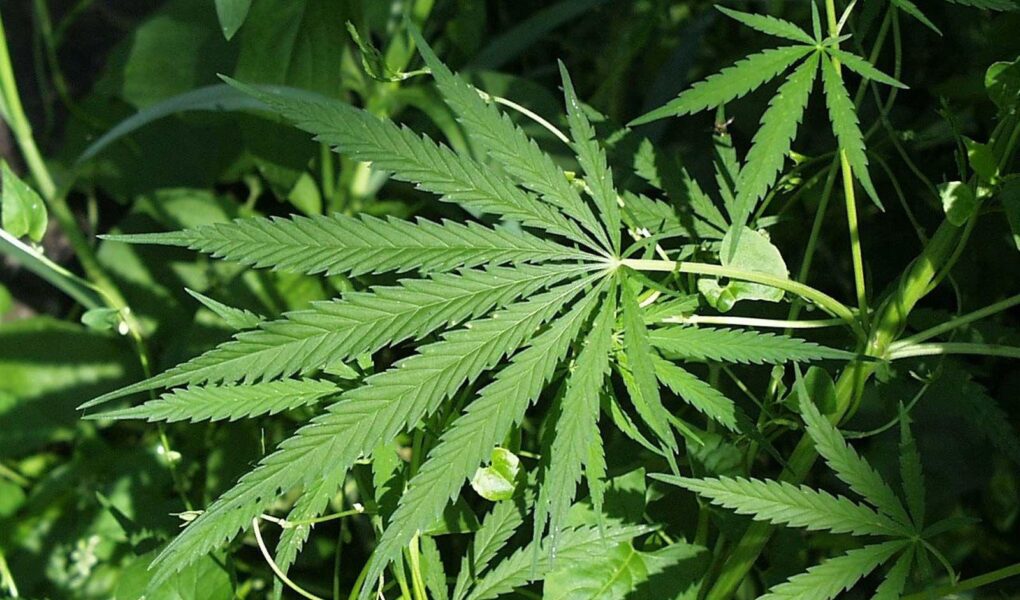In a world where opinions surrounding marijuana swirl like smoke in the air, the need for clarity has never been greater. From casual conversations in coffee shops to heated debates in legislative chambers, the term “marijuana” evokes a wide spectrum of reactions and interpretations. But what does it really mean? Is it merely a colloquial term for a recreational substance, or does it encompass a rich tapestry of cultural, medicinal, and legal implications? In this article, we invite you to embark on a journey through the many dimensions of marijuana. We will define its origins, explore its diverse varieties, and unveil the complexities that shape its identity today. Whether you view marijuana as a controversial topic or an essential part of contemporary life, understanding its definition is the first step in fostering informed dialogue about this multifaceted plant.
Table of Contents
- Understanding the Botanical Classification of Marijuana
- Exploring the Chemical Composition and Effects
- Examining the Diverse Uses in Medicine and Recreation
- Navigating the Legal Landscape: Implications and Recommendations
- Q&A
- Closing Remarks
Understanding the Botanical Classification of Marijuana
To appreciate the complexity of marijuana, one must first explore its scientific classification. The plant belongs to the Cannabis genus, which is part of the Cannabaceae family. This family encompasses various species, with Cannabis sativa, Cannabis indica, and Cannabis ruderalis being the most notable. Each species brings distinct characteristics that contribute to the plant’s diverse uses and effects. The classification further divides these species into various strains, each selected for its unique attributes, including potency, aroma, and growth patterns.
The characteristics of these species can also vary widely, affected by factors such as genetics, environment, and cultivation practices. Here is a brief overview of the three primary species:
| Species | Common Effects | Typical Uses |
|---|---|---|
| Cannabis sativa | Uplifting, energetic | Daytime use, creative tasks |
| Cannabis indica | Relaxing, sedative | Evening use, anxiety relief |
| Cannabis ruderalis | Low in THC, stunted growth | Breeding, auto-flowering hybrids |
Understanding these classifications is crucial for consumers and cultivators alike. It enables them to make informed choices about which strain best suits their needs, whether for medicinal or recreational purposes. As research continues to evolve, the complexities of marijuana’s botanical classification pave the way for enhanced cultivation techniques and product development.
Exploring the Chemical Composition and Effects
Understanding the chemical composition of marijuana reveals its complexity and diversity, particularly regarding its cannabinoids and terpenes. Cannabinoids are the active compounds that interact with the body’s endocannabinoid system. The most studied of these includes:
- THC (Tetrahydrocannabinol): The principal psychoactive compound responsible for the “high.”
- CBD (Cannabidiol): Known for its therapeutic properties without causing a high.
- CBC (Cannabichromene): Often studied for its potential anti-inflammatory benefits.
Terpenes, on the other hand, contribute to the aroma and flavor profile of various marijuana strains, influencing their effects. Common terpenes include:
- Myrcene: Known for its relaxing properties.
- Limonene: Associated with uplifting moods.
- Pinene: Thought to enhance alertness.
The interplay between cannabinoids and terpenes not only defines the unique characteristics of marijuana strains but also shapes their overall effects on users. For instance, a strain high in both THC and myrcene may deliver a sedative experience, whereas a strain rich in CBD and limonene might provide a more balanced, energizing effect. Understanding these components helps both recreational users and patients seeking therapeutic benefits make informed choices tailored to their needs.
Examining the Diverse Uses in Medicine and Recreation
Marijuana has carved out significant roles in both medical and recreational environments, showcasing its flexibility as a resource. In the medical realm, cannabinoids—active compounds found in marijuana—are increasingly recognized for their therapeutic potential. Patients suffering from various ailments turn to marijuana for relief, with conditions such as:
- Chronic pain management
- Reducing anxiety and depression symptoms
- Decreasing nausea in chemotherapy patients
- Stimulating appetite in those with eating disorders
On the recreational side, marijuana offers a unique experience that many users enjoy for its psychoactive effects. Enthusiasts partake in various forms, from traditional smoking to edibles and oils, each providing different experiences and intensities. The cultural acceptance of marijuana has paved the way for diverse activities, including social gatherings and artistic expression influenced by its use. According to recent surveys, the following are popular reasons for recreational marijuana use:
| Reason | Percentage of Users |
|---|---|
| Relaxation | 65% |
| Socializing | 50% |
| Creativity | 40% |
| Exploration of New Experiences | 30% |
Navigating the Legal Landscape: Implications and Recommendations
As the conversation surrounding marijuana continues to evolve globally, understanding the legal implications is crucial for individuals and businesses alike. The landscape is intricately complex, with varying regulations at local, state, and federal levels. Key considerations include:
- Decriminalization vs. Legalization: Differentiating between these concepts can significantly affect legal repercussions.
- Medical vs. Recreational Use: Laws vary dramatically depending on the intended use of marijuana.
- Employment Regulations: Companies must navigate potential conflicts between state laws and federal regulations.
To stay compliant and mitigate risks, stakeholders should adopt proactive strategies. It’s essential to foster clarity and consistency in the application of laws by engaging with local lawmakers. Additionally, organizations should consider developing employee training programs that address emerging issues such as workplace safety and substance use policies. The following table summarizes recommended actions for different stakeholders in the marijuana ecosystem:
| Stakeholder | Recommendations |
|---|---|
| Businesses | Develop compliance strategies and staff training sessions. |
| Consumers | Stay informed about local regulations and product safety. |
| Lawmakers | Engage stakeholders in dialogue and evaluate the impact of existing laws. |
Q&A
Q&A: Understanding Marijuana
Q: What exactly is marijuana?
A: Marijuana, also known as cannabis, is a plant belonging to the Cannabaceae family. The scientific name for the most widely used species is Cannabis sativa. It contains over 100 chemical compounds called cannabinoids, the most well-known of which are tetrahydrocannabinol (THC) and cannabidiol (CBD). These cannabinoids interact with the body’s endocannabinoid system, which plays a role in regulating various physiological processes.
Q: How is marijuana used?
A: Marijuana can be used in a variety of ways. It is most commonly smoked in joints or pipes, vaporized, or prepared as edibles—foods infused with cannabis. Additionally, it can be used in oils or tinctures for therapeutic purposes. The method of consumption often influences the onset, intensity, and duration of its effects.
Q: What are the effects of marijuana?
A: The effects of marijuana vary considerably among individuals and depend on the strain and method of consumption. Common short-term effects include euphoria, relaxation, altered sensory perception, and increased appetite. Conversely, some users may experience anxiety, paranoia, or impaired memory. The long-term effects of regular use are still being studied, but potential consequences can include dependency and cognitive impairments.
Q: Is marijuana legal everywhere?
A: The legality of marijuana varies greatly around the world and even within countries. Some places have decriminalized or legalized recreational use, while others permit only medicinal use or maintain strict prohibitions. It’s important for users to understand local laws to avoid legal complications.
Q: What is the difference between medicinal and recreational marijuana?
A: Medicinal marijuana is used to alleviate symptoms of various medical conditions, such as chronic pain, epilepsy, or nausea. It may contain a different balance of cannabinoids and be prescribed by healthcare professionals. Recreational marijuana, on the other hand, is used for enjoyment and relaxation. It typically has higher THC levels, which contribute to its psychoactive effects.
Q: Can marijuana have health benefits?
A: Research suggests that marijuana may provide health benefits when used appropriately. Conditions like chronic pain, multiple sclerosis, and anxiety may be relieved with medical marijuana. However, it’s crucial to consult with healthcare professionals to weigh potential benefits against risks, as individual responses vary.
Q: What else should someone know about marijuana?
A: Marijuana is a complex and multifaceted subject. Aside from its biological and legal aspects, the cultural perception of marijuana is evolving. In some societies, it is viewed as a beneficial substance, while in others, it carries stigma. Understanding these varied perspectives can provide deeper insights into the ongoing debates surrounding marijuana use and its place in society.
Closing Remarks
As we draw the curtain on our exploration of marijuana, it’s clear that this multifaceted plant offers more than meets the eye. From its rich historical roots to the evolving dialogue surrounding its use in modern society, marijuana embodies a complex narrative that transcends mere definition. Whether viewed through the lens of medicine, recreation, or culture, it invites curiosity and conversation.
Understanding marijuana requires an open mind and a thoughtful examination of its many layers—its benefits, risks, legal status, and societal implications. As we continue to navigate the changing landscape of cannabis, fostering informed discussions will be crucial. So, as you contemplate the myriad dimensions of this intriguing plant, remember that knowledge is power. The journey to understanding marijuana is not just about defining it; it’s about embracing the continuous evolution of perspectives that shape our world.



